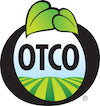
The bacterial colonies in the digestive system start to develop at an early age, and the healthier the food is that we feed our children certainly impacts the development of beneficial gut bacteria. Now, new research says the levels and variety of healthy intestinal flora may be helpful in predicting the risk of food allergies and asthma in children, and may even be beneficial in prevention of these conditions.
That’s the conclusion of recent research out of the University of Alberta in Canada. The study was published in a recent issue of the journal Clinical and Experimental Allergy.
According to the researchers, infants at three months of age with less varied microbiota may be more at risk for developing certain food sensitivities, including peanuts, milk and eggs, with an increased likelihood of those sensitivities becoming allergies.
The researchers looked at stool samples of more than 160 infants between the ages of 3 and 12 months, with food sensitivities being determined at 12 months of age with skin testing on the children. According to Food Navigator, the younger infants who had “low microbiotic richness in their gut, as well as imbalance of the bacteria Enterobacteriaceae and Bacteroidaceae,” were more likely to develop the allergies or sensitivities at a year. The predictive capabilities of the bacteria imbalances could become more fine tuned in the future, giving the medical community early tools to help thwart life-threatening allergies.
“Our findings suggest that gut colonization during infancy may influence the development of food allergy and atopic disease and could present novel targets for intervention,” the study authors wrote.
According to the researchers, as many as 28 percent of pre-school aged children in the U.S. have food sensitivities.
The study’s findings support other research that has linked diverse gut bacteria with improved health and wellness. And other recent research has found benefits in early introduction to common allergens to help children build immunity.

Fad diets come and go and come and go and usually, they don’t work. At least, not in the long term. But if you’re looking to lose weight, and then maintain a healthy weight, the answer might be a simple one: eat more fiber.
That’s the finding of a recent study published in the journal the Annals of Internal Medicine. The study compared the benefits of a rather complicated American Heart Association recommended diet, which on top of its complex recommendations also included reducing calories by as much as 1,000 per day, to simply adding more fiber-rich foods. No calorie counting, no eliminating, just eating more fibrous foods like fruits, vegetables, beans and grains.
The result?
While the American Heart Association group did lose a good bit of weight in the year of the study, about six pounds, the group of subjects who didn’t do anything complicated to their diet regimen but just eat more fiber, lost nearly as much: 4.6 pounds. “It was a pretty small difference, but the AHA group suffered greatly for it: They were cutting more than twice as many calories per day, around 400, as the fiber group had been,” reports the Atlantic. “Fiber is also a part of the AHA diet, but the fiber group was eating about twice as much of it as the other participants. There was no difference in blood pressure or fasting glucose levels between the groups at the end of the experiment. In other words, the people killing themselves to meet a raft of rules did roughly as well as the people who were simply eating more beans and apples.”
More beans and apples. That sounds pretty doable, right? Let’s face it; many diet programs, like the AHA recommendation, can be intimidating just by the sheer work involved. People have a difficult enough time getting into the kitchen to prepare meals in the first place. Add to that counting sodium levels, calories and serving sizes? It’s too much. But just increasing the amount of fiber-rich foods doesn’t involve measuring and counting. According to the Atlantic, most people eat half of the recommended daily intake for fiber, which is 25-30 grams per day. It’s just the difference between eating a cookie for a snack or say, an apple. Or if you really have to have the cookie, make it oatmeal (fiber!).

If you can’t seem to stop yourself from eating just one potato chip as the Lay’s campaign goes, it’s not entirely your fault. According to a recent study, the more processed the food is, the more it’s likely to be addictive.
Using the term addiction with food has been controversial, because it doesn’t seem to elicit the same physiological behaviors alcohol or drug addiction can. But the new findings may confirm the long-standing theory that our brains don’t know when to stop eating, particularly when we’re flooding our bodies with processed junk food.
According to the study, published by PLoS ONE, foods that are highest in refined carbohydrates or that contain added fats are more likely to cause “addictive eating.”
“Foods like pizza, chocolate, ice cream and french fries were found to be the most addictive, while foods like cucumbers, beans, and brown rice were among the least addictive,” reports Runner’s World. “The research team also found that foods with high glycemic loads were particularly likely to cause problems for those prone to addictive eating behavior.”
The researchers conducted two separate studies with more than 500 participants asked to identify foods that expressed problematic behaviors. In the first study, subjects identified foods specifically connected with “losing control” over how much they ate. And in the second study, participants rated 35 different foods on the likelihood that they could become problematic.
“The top six ‘problem’ foods in both studies were chocolate, pizza, ice cream, French fries, cookies, and chips,” reports Runner’s World. “Meanwhile, few people reported losing control over the amount of cucumbers, beans, brown rice, broccoli, water, carrots, or apples they consumed.”
"This is a first step towards identifying specific foods, and properties of foods, which can trigger this addictive response," said Nicole Avena, a professor at Icahn School of Medicine at Mount Sinai and one of the study’s co-authors, said in a statement. "This could help change the way we approach obesity treatment. It may not be a simple matter of 'cutting back' on certain foods, but rather, adopting methods used to curtail smoking, drinking and drug use.”

Australia’s Great Barrier Reef is a destination, one of the most beautiful places on earth. But the Great Barrier Reef, like many coral reefs around the world, is being overwhelmed by micro plastics, and the effect is devastating.
According to Australia’s Brisbane Times, “coral, turtles and sea birds that ingested micro plastics suffered blockages to their digestive tracts and had their feeding patterns affected,” a recent James Cook University study concluded.
It turns out that corals are what are known as “non-selective eaters”, ingesting anything that comes their way.
"Coral tends to feed on a variety of different food particles such as plankton and sediment," Chief Investigator with the ARC Centre of Excellence for Coral Reef Studies at James Cook University, Mia Hoogenboom, told the Times.
"They take whatever particles are available to them and can take plastics and mistake them for their normal food."
According to the researchers, a variety of micro plastics were found in the coral reefs, including small amounts of polystyrene and polyethylene. These can come from larger plastic products breaking down in the oceans and plastic microbeads found in body care products. What’s particularly harmful, beside the chemicals in the plastic itself, is that the tiny plastic particles can soak up pollution including oil and heavy metals, which are quite toxic once ingested.
Lead author of the study, James Cook University master's graduate Nora Hall, told the Brisbane Times that the corals are eating quite a bit of plastic, “We found that the corals ate plastic at rates only slightly lower than their normal rate of feeding on marine plankton."
Along with other threats to coral reefs including rising ocean temperatures, there’s no telling how dangerous a plastic diet is going to be for these ocean creatures. But one thing’s for sure: it can’t be a good thing.
Keep plastic out of the ocean by recycling, reducing your use of plastic products and cutting microbeads out of your skin care regimens.

If your ballet dreams were crushed in grade school when your coordination took a turn for the gangly, you can redeem yourself. Well, sort of. You won’t likely be taking the lead in Swan Lake, but with a barre class, the hottest trend in fitness right now, you can take your health to a new and familiar level without the pressure of you know, trying to be a ballerina.
Barre classes are so hot right now, blending good old fashioned aerobics with ballet warm-ups for some seriously sculpted and toned legs and behinds. The trend’s got longtime yoginis converting, and for those fitness lovers who once upon a time also practiced ballet, it’s a welcome return to long stretching and tippy-toe work. Plus, it just works.
The workouts can resemble HIIT training (High Intensity Interval Training) where you work as hard as you can (on your tip toes, of course) for short intense bursts before a welcome, brief break. Some barre workouts can burn more than 500 calories in one hour, sculpting and shaping along the way.
Unlike the gym, where there are dozens of confusing and intimidating machines, barre studios are super simple—a nice wood floor, a ballet barre and maybe some straps or balls. And because barre studios are so bare, they’re easy to pop up. There are more than 700 barre studios in the the U.S.; Pure Barre now has close to 300 studios in the U.S. Pop Physique in Los Angeles keeps popping out new locations like mosquito bites in June.
Looking to mix-up your fitness routine? Don’t let the ballet idea scare you away from a barre class. They’re really accessible for anyone, even if you’ve never donned a tutu. And they’re not just for women, either. While class attendees are mostly women, men do take the classes and enjoy the strenuous workout too. See you on the barre!


